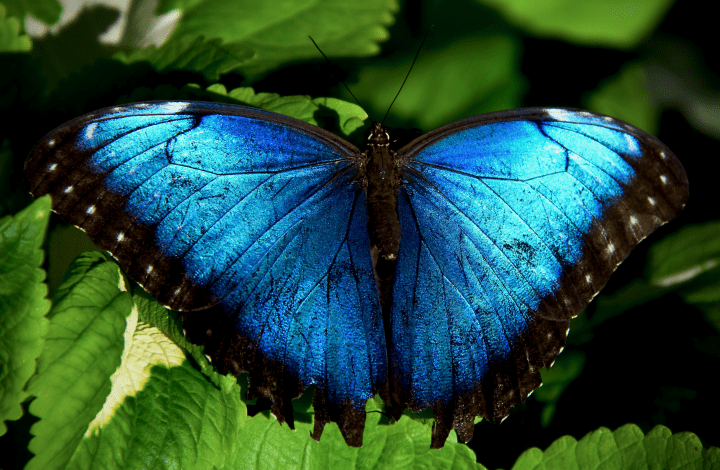Problem Definition Award - High School
UN Sustainable Development Goals Addressed
-

Goal 11: Sustainable Cities & Communities
-

Goal 13: Climate Action
2021 Youth Design Challenge
This design concept was developed by participants in the Institute’s Youth Design Challenge. The descriptions below are from the team’s competition entry materials.
School: Fryeburg Academy
Location: Fryeburg, ME, United States
Coach: Michael Dodd-o
Team members: Bueri (Stella) Yoon, Daryna Serediuk, Gege (Grace) Liu, Jiwon Choi, May Shin, Yungyeong (Zoe) Jung
Video Pitch

Innovation Details
The MorphoBrick is a building material concept, inspired by the Morpho butterfly, that changes its color and reflectivity in response to temperature. The team recognized that heating and cooling systems around the world are responsible for significant amounts of greenhouse gas emissions. Their design allows buildings to regulate their temperatures efficiently by either absorbing or reflecting solar radiation, using a strategy inspired by the nanostructures found on Morpho butterfly wings, which allows both reflection and absorption of light waves.
What is the problem addressed for this Challenge and how is it related to climate change?
Heating systems in Maine and around the world are unsustainable because oils, gas, fossil fuels are burnt for heating. The excessive usage of nonrenewable energy for buildings emits massive amounts of greenhouse gas, which contributes significantly to global warming. The rising temperature of air and ocean results in the migration and death of many species, causing damage to the world’s and ecosystem. It also causes extreme weather that severely threatens, for example, Maine’s agriculture and economic development. In order to solve the problem, the team developed the idea to make eco-friendly buildings that regulate temperature by themselves.
What does this design solution do? How does it solve and improve a problem?
By constructing the brick that can change its color and reflectivity, buildings will be able to regulate their temperatures efficiently by either absorbing or reflecting heat from the solar radiation. The MorphoBrick is constructed with four layers: photonic skin made by 3D printing at nanoscale for light reflection, black body for heat absorption, heat flow tunnel, and concrete developed by biochar technology. Being made of eco-friendly materials, MorphoBrick is an excellent solution for the excessive usage of natural resources in heating and cooling systems. Less carbon dioxide will be released and henceforth urban heat will be decreased.
How was this solution inspired by nature? What organisms inspired it?
The idea is inspired by the Morpho sulkowskyi butterfly’s wing structure. Multi-scale nanostructures diffract lights from the wings’ surfaces, causing the waves to interfere with each other and spread across the spaces as they travel through the structures. Morpho sulkowskyi butterflies’ manipulation of lights allows them to produce iridescent colors, which they rely upon for camouflage, thermoregulation, and signaling. Their wing structure allows both reflection and absorption of light waves, making it possible for us to create and regulate both dark and light colors of the surface of our designed bricks for heating and cooling buildings.

